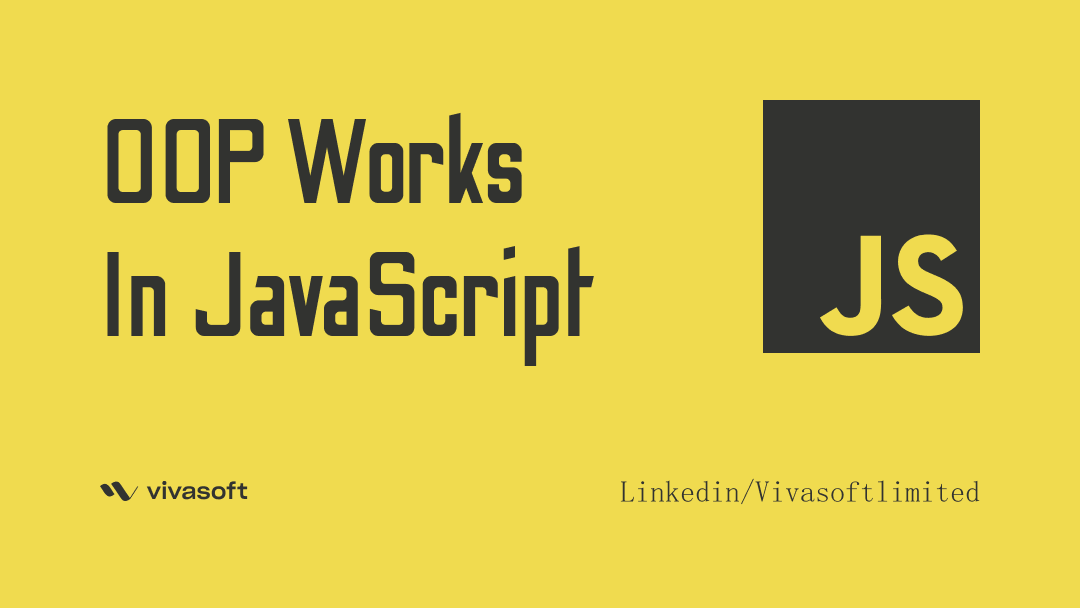Before starting we have to keep in mind that Javascript is not a class-based object-oriented language. Javascript is a prototype based language. Lets see the definition of Class based language and Prototype based Javascript. In the future, a blog will be written discussing the difference between Class based language and Prototype based Javascript.
According to Wikipedia, class-based programming is
A style of Object-oriented programming (OOP) in which inheritance occurs via defining classes of objects, instead of inheritance occurring via the objects alone
According to MDN,
A prototype-based language has the notion of a prototypical object, an object used as a template from which to get the initial properties for a new object.
Prototype
Each object has a private property which holds a link to another object called its prototype.
Take a look at this code:
let name = {
fname: "Tahsin",
lname: "Ahmed"
}
console.log(name.fname);
console.log(name.hasOwnProperty("mname"));
OUTPUT:
Tahsin false
The name object has only two properties, fname and lname. Where does the hasOwnProperty come form? It comes from Object’s [[Prototype]]. By default, every object has it’s own prototype. If we console it, we will see.

We saw that a lot of properties under Object. All these properties are coming from the global Object prototype. But, we can modify it as our own requirements.
Modifying the __proto__/[[Prototype]] property
Please see the example below:
function Person(name, age) {
let personObj = Object.create(constructorObject);
personObj.name = name;
personObj.age = age;
return personObj;
}
let constructorObject = {
speak: function(){
return "Man is mortal"
}
let bingo = Person("Bingo", 54);
console.log(bingo);

Notice the __proto__ property and the speak method? Object.create uses the argument passed to it to become the prototype.
Let’s regenerate this using new keyword.
function Person(name, age) {
this.name = name;
this.age = age;
}
Person.prototype.speak = function() {
return "Man is mortal";
}
let john = new Person("John", 45);
console.log(john);
If we console it from browser, we will get the same output as before. But, you may notice that, another __proto__ exists under the Person [[Prototype]. It is called Prototype Chaining.
Prototype Chaining
We can wrap all these things reminding the short explanation of MDN which is given below:
Each object has a private property which holds a link to another object called its prototype. That prototype object has a prototype of its own, and so on until an object is reached with
nullas its prototype. By definition,nullhas no prototype, and acts as the final link in this prototype chain.
Let’s try a example for Prototype Chaining.
let f = function () {
this.a = 1;
this.b = 2;
}
let o = new f();
f.prototype.b = 3;
f.prototype.c = 4;
console.log(o.a);
console.log(o.b);
console.log(o.c);
console.log(o.d);
OUTPUT:
1 2 4 undefined
How this code does work? Why does console.log(o.d) give us undefined?
- Firstly, we create a function named f
- Creating a object from function f.
- Adding two properties
bandcin function f prototype. But, you can’t add prototype like{ b: 3, c: 4 }. Because, this will break prototype chaining. - After adding properties, the whole scenario looks like this.
o.[[Prototype]]has propertiesb and c.o.[[Prototype]].[[Prototype]]is Object.prototype.- Finally,
o.[[Prototype]].[[Prototype]].[[Prototype]]isnull.
– This is the end of the prototype chain, asnull, by definition, has no[[Prototype]]. - Thus, the full prototype chain looks like:
{ a: 1, b: 2 } ---> { b: 3, c: 4 } ---> Object.prototype ---> null.
- As
ocontainsa, so, it prints 1. - As
ocontainsb, so, it prints 2. You may see thatbis also foundo.[[Prototype]]. By default, object prioritizes it’s own property first, then goes to it’s prototype if not found. This is Property Shadowing. cexists ino.[[Prototype]], so, first it tries to find it from it’s own property. But, not found, then searches into it’so.[[Prototype]]. Yeah, found it!!!.- In case of
dwe getundefined, the same thing goes for it also. It follows those steps:- Is there a
down property ono? No, check itsprototype. - Is there a
down property ono.[[Prototype]]? No, check itsprototype o.[[Prototype]].[[Prototype]]is Object.prototype and there is nodproperty by default, check its prototypeo.[[Prototype]].[[Prototype]].[[Prototype]]isnull, stop searching- no property found, return
undefined
- Is there a
What does happen If the object has long prototype chain and not found desired property? How can we overcome the negative impact?
The searching time of prototype chaining is high which can lead negative impact on performance if performance is considered to be a major thing. Because it is trying to access nonexistent properties will always traverse the full prototype chain. For this, we have to use hasOwnProperty to check whether the property exists or not. hasOwnProperty is the only thing in JavaScript which deals with properties and does not traverse the prototype chain.
That’s all for this part. In Part – 2, we will move into implement 4 pillars of OOP using object and function.
NOTE: Following the ECMAScript standard, the notation someObject.[[Prototype]] is used to designate the prototype of someObject. Since ECMAScript 2015, the [[Prototype]] is accessed using the accessors Object.getPrototypeOf() and Object.setPrototypeOf(). This is equivalent to the JavaScript property __proto__ which is non-standard but de-facto implemented by many browsers.
It should not be confused with the func.prototype property of functions, which instead specifies the [[Prototype]] to be assigned to all instances of objects created by the given function when used as a constructor. The Object.prototype property represents the Object prototype object.
















